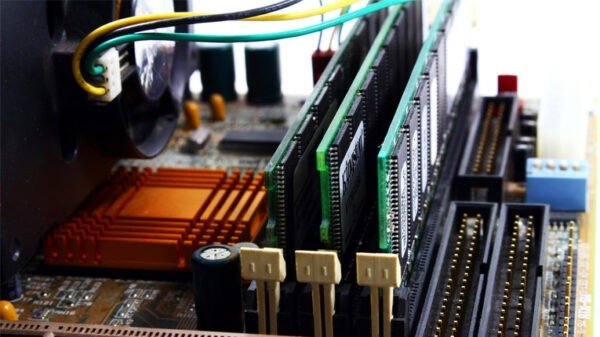If I had a rupee for every time someone asked me, “Bro, how much RAM do I really need?,” I’d have enough to buy a flagship phone and upgrade its RAM, if that were even possible.
Jokes aside, RAM is one of the most misunderstood components in tech.
We hear “8GB is enough” or “You need at least 16GB for gaming” thrown around a lot, but what does RAM actually do?
And are all types of RAM the same? Let me break it down.
What Is RAM?
RAM stands for Random Access Memory, and it’s basically your device’s short-term memory.
Think of it like a super-fast workspace where your system temporarily loads the things it’s actively using, like your browser tabs, Photoshop edits, a Word doc you forgot to save, or the game you’re halfway through.
Unlike storage (like SSDs or HDDs), which is permanent, RAM is volatile, meaning all the data in it is lost when your system shuts down or restarts.
In daily use, the more RAM you have, the more things you can do simultaneously, and the smoother those things will run.
If you’ve ever seen your laptop crawl because you had 42 Chrome tabs open (been there), that’s usually your RAM crying for help.
RAM in Action

Let me walk you through a few everyday scenarios where RAM plays a starring role:
- Working Professional (like me): When I’m writing articles, switching between 10 tabs, editing images, and running Spotify in the background, 16GB RAM keeps everything fluid. 8GB worked… until I started multitasking hard.
- Gamer Friend: He swears by 32GB because he runs Discord, games like CoD Warzone, OBS for streaming, and Chrome all at once. Plus, modern AAA games are memory-hungry.
- Student: My cousin is fine with 8GB for note-taking, Zoom classes, browsing, and watching Netflix. But once she tried Premiere Pro… well, let’s just say her laptop didn’t survive the lag.
So yes, RAM requirements depend entirely on what kind of user you are.
Types of RAM

Just like you wouldn’t wear running shoes to a black-tie event, not every RAM type suits every job.
Here are the most common types you’ll come across:
1. DRAM (Dynamic RAM)
This is the broad category under which most RAM falls.
It stores each bit of data in a separate capacitor and needs to be refreshed thousands of times per second; hence the name “dynamic.”
2. SRAM (Static RAM)
Faster and more reliable than DRAM, but also more expensive and used in smaller quantities.
You’ll find it in your CPU cache (L1, L2, L3 cache), not as main memory.
3. SDRAM (Synchronous DRAM)
Older tech, but it was a game-changer in the early 2000s because it synchronised with the CPU’s clock speed.
It paved the way for modern RAM like DDR.
4. DDR (Double Data Rate) SDRAM
This is where it gets real.
- DDR1 to DDR5: Each generation brings higher speeds, better bandwidth, and lower power consumption.
- DDR4: Still the most common in laptops and desktops today. Reliable and mature.
- DDR5: The future (and already the present in newer systems). Higher transfer rates, better multitasking. If you’re buying a new PC in 2025, go for DDR5 if your motherboard supports it.
Pro tip: DDR versions are not interchangeable — a DDR4 stick won’t fit into a DDR5 slot. Check the compatibility of your motherboard.
5. LPDDR (Low Power DDR)
Used in smartphones, tablets, ultrabooks, and other compact devices. These consume less power, which is ideal for battery-powered use. Current flagships are on LPDDR5 or LPDDR5X.
6. GDDR (Graphics DDR)
This is RAM for your GPU (Graphics Processing Unit). Used in gaming PCs, consoles, and pro workstations. GDDR6 is common today, but GDDR7 is already out for bleeding-edge performance.
How Much RAM Do You Really Need?
Now that we’ve gone through the types, here’s what I usually recommend depending on who you are:
Basic users (browsing, office work): 8GB is good.
- Multitaskers/Creative users: 16GB is ideal.
- Gamers/Streamers/Editors: 32GB or more for headroom.
- Mobile users: 6GB is the new minimum, 8GB–12GB for premium devices.
Final Thoughts
RAM isn’t just a number on a spec sheet.It directly affects your daily experience.A laptop with a fast SSD and a weak processor can still feel decent with enough RAM.But even the best processor will stutter if your memory is choking.Before you buy your next device, don’t just ask how much RAM it has.Ask what type it is, how fast it is, and if it’s upgradeable.In a world where we’re constantly switching between apps, calls, docs, videos, and games, RAM is the unsung hero keeping our digital lives running smoothly.And if someone ever tells you “more RAM doesn’t matter,” just show them your 43 Chrome tabs and say, “Sure, tell that to my laptop.”



2 Comments
Pingback: Smartphone Virtual RAM Explained
Pingback: GPT-5 Launch Expected in August: OpenAI's Next Big AI Leap